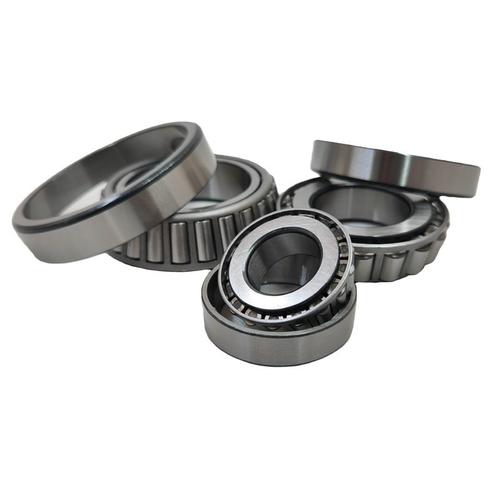Understanding Tapered Roller Bearings Metric Load Capacity: Key Factors and Applications
Tapered roller bearings metric load capacity refers to the maximum load these bearings can handle under specific conditions. These bearings are designed to manage both radial and axial loads, making them ideal for various industrial applications.
Table of Contents
1. tapered roller bearings metric load capacity chart2. how to calculate tapered roller bearings metric load capacity
3. tapered roller bearings metric load capacity vs radial load
4. best tapered roller bearings for high load capacity
1. tapered roller bearings metric load capacity chart

Tapered roller bearings metric load capacity charts provide essential data for engineers and designers. These charts typically display dynamic and static load ratings, helping users select the right bearing for their application. Dynamic load capacity indicates the bearing's ability to withstand repeated stress over time, while static load capacity refers to the maximum load the bearing can handle when stationary. Understanding these charts is crucial for ensuring optimal performance and longevity of the bearing in various operational conditions. Factors such as bearing material, lubrication, and alignment also play a significant role in determining the actual load capacity. Always refer to the manufacturer's specifications for accurate data.
2. how to calculate tapered roller bearings metric load capacity
Calculating the metric load capacity of tapered roller bearings involves several steps. First, identify the bearing's basic dynamic load rating (C) and basic static load rating (C0) from the manufacturer's datasheet. Next, consider the application's radial and axial loads. Use the formula P = XFr YFa, where P is the equivalent dynamic load, Fr is the radial load, Fa is the axial load, and X and Y are factors determined by the bearing's design. For static load capacity, ensure the combined radial and axial loads do not exceed C0. Proper calculation ensures the bearing operates within safe limits, preventing premature failure and optimizing performance.
3. tapered roller bearings metric load capacity vs radial load
Tapered roller bearings are unique in their ability to handle both radial and axial loads. The metric load capacity of these bearings is influenced by the ratio of radial to axial loads. Higher radial loads typically reduce the bearing's ability to handle axial loads and vice versa. The contact angle of the rollers plays a critical role in this balance. Bearings with a larger contact angle are better suited for axial loads, while those with a smaller angle excel in radial load applications. Understanding this relationship is vital for selecting the right bearing for specific operational requirements, ensuring efficiency and durability.
4. best tapered roller bearings for high load capacity
Selecting the best tapered roller bearings for high load capacity involves evaluating several factors. Look for bearings made from high-quality steel, such as SAE 52100, which offers excellent hardness and durability. Premium bearings often feature advanced heat treatment processes and precision grinding to enhance load capacity. Brands like Timken, SKF, and NSK are renowned for their high-performance tapered roller bearings. Additionally, consider bearings with optimized roller and raceway profiles, as these designs distribute loads more evenly, reducing stress concentrations. Proper lubrication and maintenance further extend the bearing's load capacity and service life.
Tapered roller bearings metric load capacity is a critical consideration for engineers and designers across industries. Whether you're evaluating load charts, calculating capacities, or comparing radial and axial load performance, understanding these aspects ensures optimal bearing selection. High-quality bearings from reputable manufacturers can significantly enhance performance and reliability. Explore our comprehensive guide to tapered roller bearings to make informed decisions for your applications.
In conclusion, tapered roller bearings metric load capacity is a vital parameter for ensuring efficient and reliable operation in various industrial applications. By understanding load charts, calculation methods, and the relationship between radial and axial loads, you can select the best bearings for your needs. High-quality materials and designs further enhance performance, making tapered roller bearings a preferred choice for demanding environments.




 13869596835
13869596835